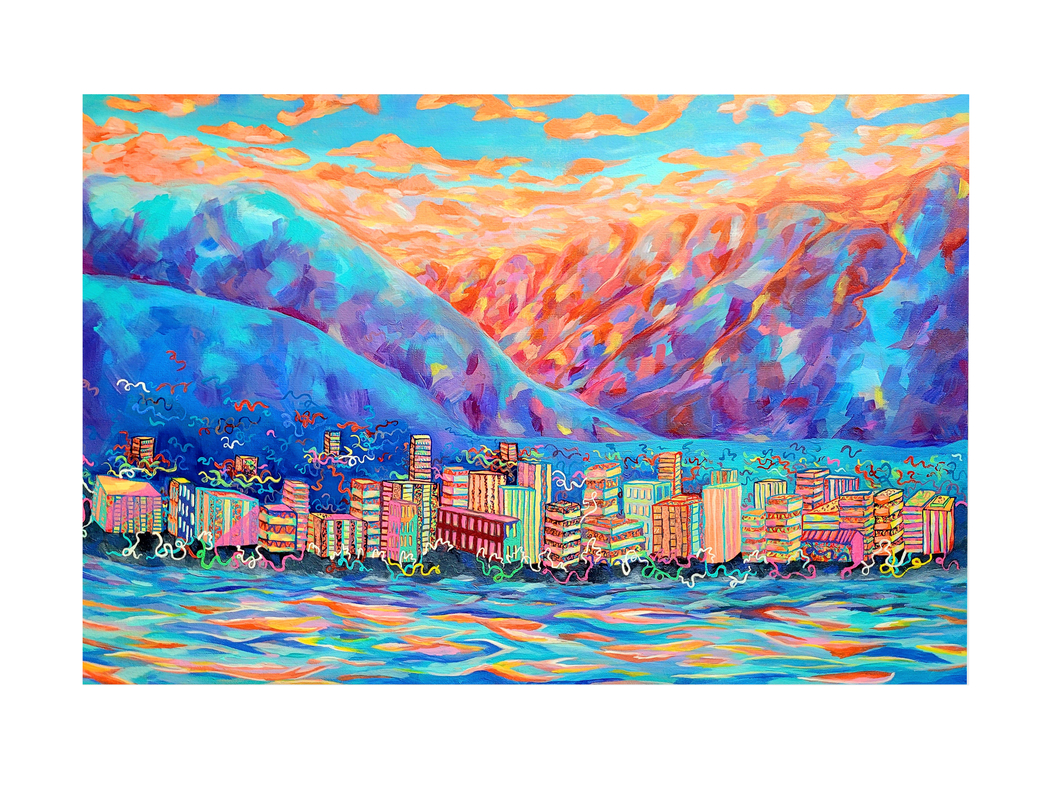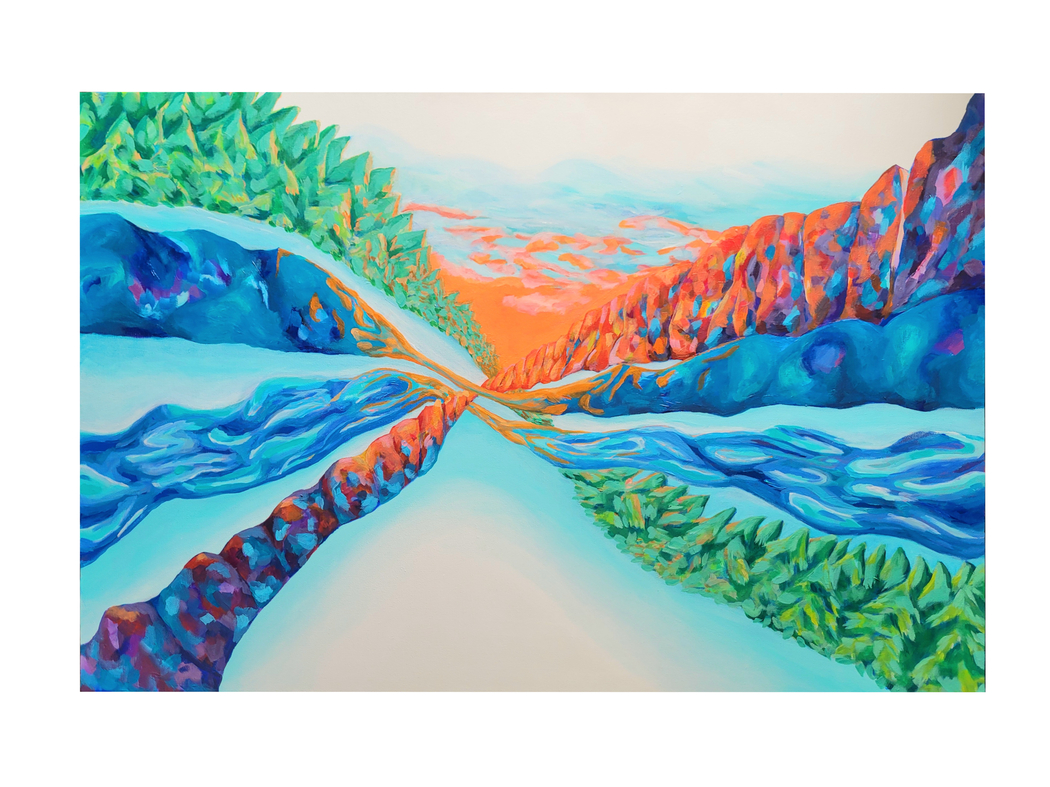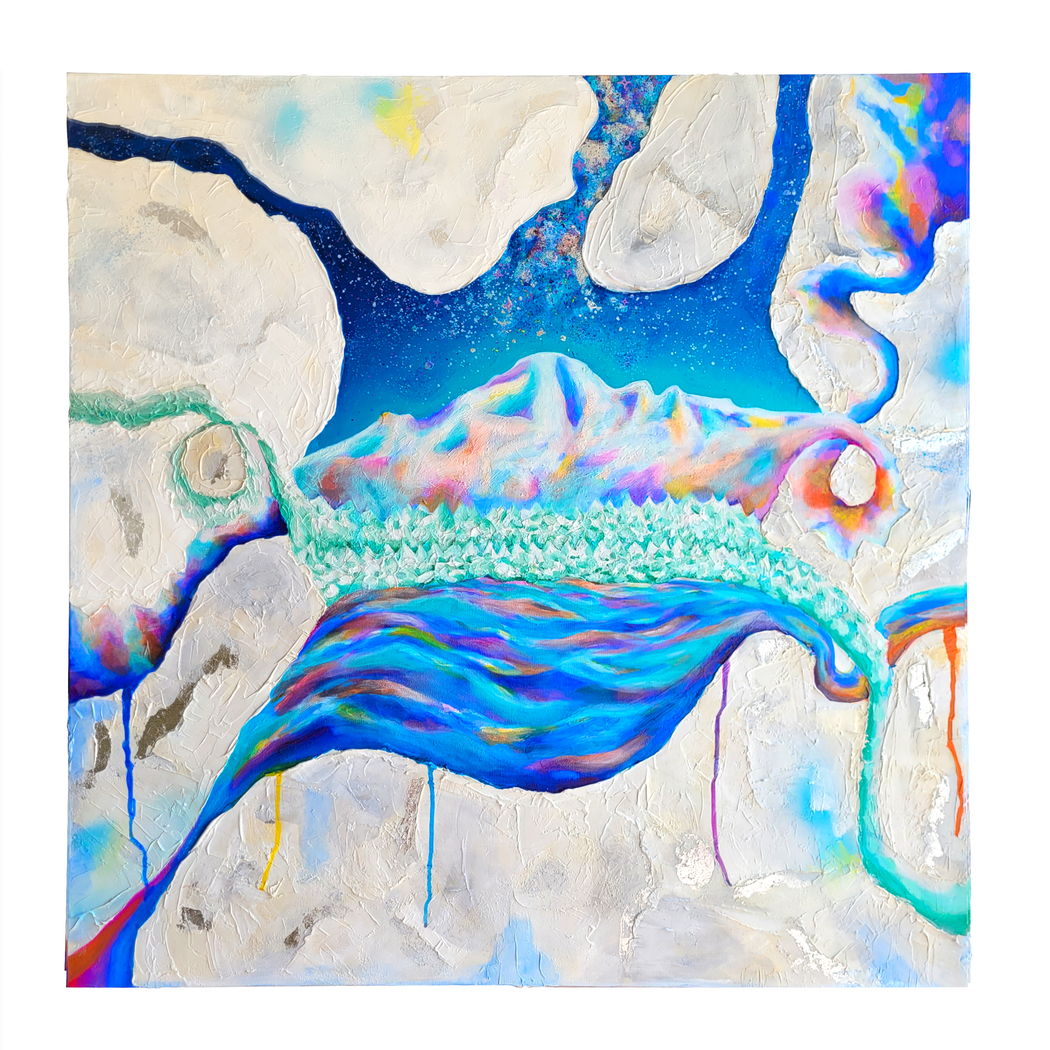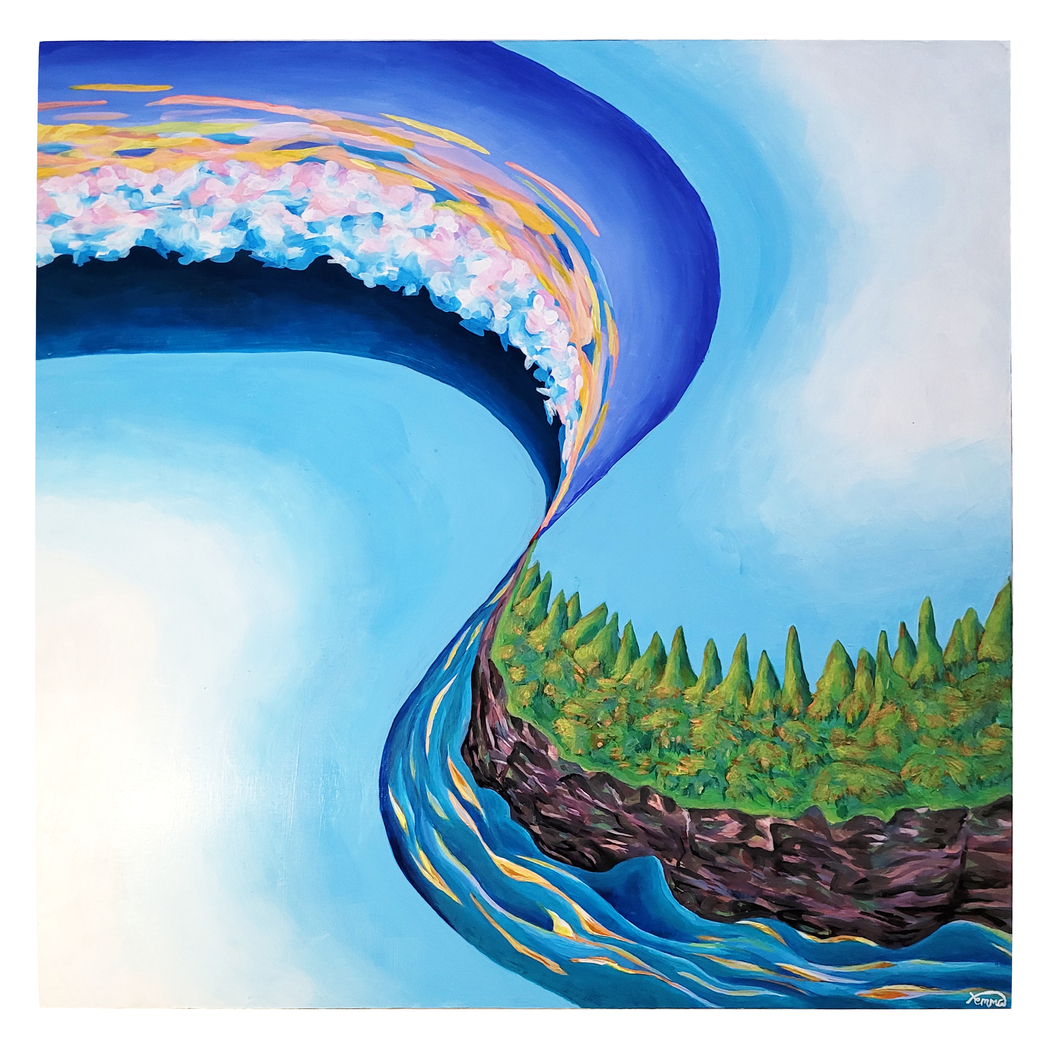Emma Fish
Year of birth: 1994.
Where do you live: North Vancouver, British Columbia, Canada.
Describe your art in three words: vibrant, interwoven, expressionism.
Your discipline: acrylic and mixed media.
Website | Instagram
Your work often reimagines natural landscapes with an unconventional color palette. How do you decide which colours to use for a particular piece, and what role does colour play in conveying the emotion or mood of your paintings?
I don’t believe in too much pre-planning when it comes to my work. Even though I create abstract pieces, I start with a digital coloured sketch to block out the initial colours. But once I begin painting, the process becomes fluid. The colours evolve naturally as the piece progresses, and they guide me in balancing the composition.
The interaction between the colours develops organically during the creation process. I find that this approach allows me to capture the essence of the landscape in a way that feels fresh and unexpected, both for myself and for those who view the piece. In a sense, I become the first viewer of the work as it takes shape, unlocking the true beauty from the original landscape alongside everyone else.
 Emma Fish | Home | 2023
Emma Fish | Home | 2023
How do you balance the different elements in your mixed media work? Do you find that certain materials express certain emotions or ideas better than others?
Balancing the different elements in my mixed media work is a deeply intuitive process. I experience emotional dysregulation, which means I often struggle to fully grasp or control my emotions in the moment. Instead of using specific materials to convey certain emotions, my creative process becomes a journey of discovery.
As I layer different elements and experiment with materials, I gradually uncover the emotions I’m trying to express. It’s a process filled with trial and error, but somewhere along the way, it all starts to make sense. By the time the piece comes together, I often feel transformed, like I’ve gained a better understanding of what I was aiming to achieve emotionally.
 Emma Fish | Elements of Us | 2024
Emma Fish | Elements of Us | 2024
In your art, you often depict nature in a vibrant and imaginative way. How do you view the relationship between humans and nature, and how does that influence your creative vision?
I see a profound connection between humans and nature in my work. Since the dawn of time, humans have thrived through community and the ability to share resources. Our communication and collaboration have been key to our survival and success as a species.
In modern society, we often prioritise individualism, sometimes losing sight of the bigger picture. Just as nature relies on diversity to build a thriving ecosystem, so do we. There’s a clear parallel between the natural world and human society—we need to honour the different roles we all play, rather than focusing narrowly on certain skill sets. This belief strongly influences my creative vision, as I aim to highlight the importance of diversity and interconnectedness in both nature and humanity.
As an artist who is neurodiverse and has a learning disability, how has this aspect of your identity shaped your artistic practice and the messages you wish to convey through your art?
I don’t see my neurodiversity and learning differences as a disability. Instead, I view them as assets that have shaped my unique perspective and creative process. Society often highlights those who fit into certain categories of “normal,” but thinking differently can lead to extraordinary outcomes. Some of the greatest minds in history didn’t fit the mould, and I believe that’s true for many artists as well. While there are challenges, my way of thinking allows me to see and create in ways that might not be possible otherwise. This difference fuels my art and the messages I aim to convey, celebrating the beauty of diverse perspectives.
 Emma Fish | A Winters Dream
Emma Fish | A Winters Dream
You’ve worked on making art more accessible and affordable through outdoor exhibitions and hand-painted jewelry. What challenges have you encountered in making art available to a wider audience?
Making art more accessible has always been a passion of mine, but it definitely comes with its challenges. Fine art often feels confined within gallery walls, accessible only to those with higher incomes. That’s why I’ve poured so much energy into my hand-painted earring line as well as more accessible pieces. I believe art should be something everyone can enjoy, and wearing it every day is just as valuable as displaying it on a wall.
One of the biggest challenges is expanding my network into shops while managing the costs of starting up a business that prioritises using sustainable materials. Establishing connections with retailers across the country, or even globally, is time-consuming and expensive. Plus, I’m competing with mass-produced products from companies with large teams, while I’m handling everything myself—from marketing to creating to running the business.
Despite these challenges, my passion for creating high-quality, adventure-ready wearable art keeps me going. The reward of making art accessible and affordable, and seeing people enjoy it in their daily lives, makes all the effort worthwhile.
Can you share a specific project or piece of art that was particularly meaningful to you? What made that experience stand out in your career?
My current collection “Coming Together” is particularly meaningful to me because it challenges the conventions of landscape art by blending abstraction with the natural world. In this series, I warp space and defy gravity to deconstruct nature, inviting viewers to see its elements in a new light. Through this approach, I’m not just painting landscapes—I’m exploring the complexities of our world and the possibility of positive change.
The question that drives this work is: Are we coming apart, or can we come together? It reflects my own struggles with dismay and distrust in humanity, while also holding onto hope of a better future. This collection has pushed my artistic boundaries and has resonated with audiences, opening doors to galleries and museums across the province. It’s a standout moment in my career, and I’m excited to see where it will take me next.
 Emma Fish | All I Am | 2023
Emma Fish | All I Am | 2023
As an artist who has lived in both Australia and Canada, what cultural differences do you notice in how art is perceived or valued in these two countries?
Living in both Australia and Canada has given me a unique perspective on how art is perceived and valued in these two countries. Canada is now my home, and I feel a sense of adventure here that I never quite experienced in Australia. If I were born on the beach in Australia, perhaps I would have never left, but my journey led me to this new landscape.
When I return to Australia, I’m struck by the vibrancy and laid-back attitude that permeates its art culture. There’s a boldness and brightness in Australian art that reflects the country’s spirit. In contrast, Canadian culture can feel more reserved, yet the adventurous spirit deeply influences the art scene here.
These days, I feel like an art nomad, drawing inspiration from both cultures yet not entirely belonging to either. My work borrows from each, blending elements of both worlds without anchoring itself to a single home.

Maree T Fish
Vibrant colours bring the landscape and cityscapes alive in Emma’s unique art pieces. The art reflects the artist’s appreciation of the beauty of the natural environment, depicted in her paintings. The bright colour pallet lifts mood and creates atmosphere in the spaces where the paintings are displayed.